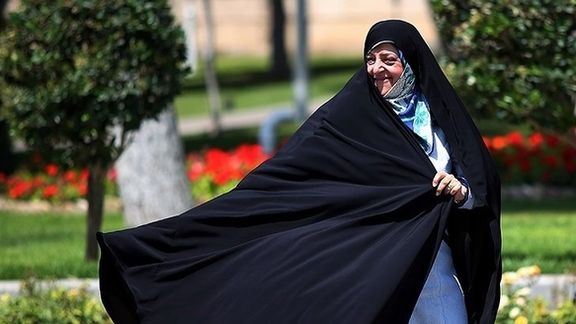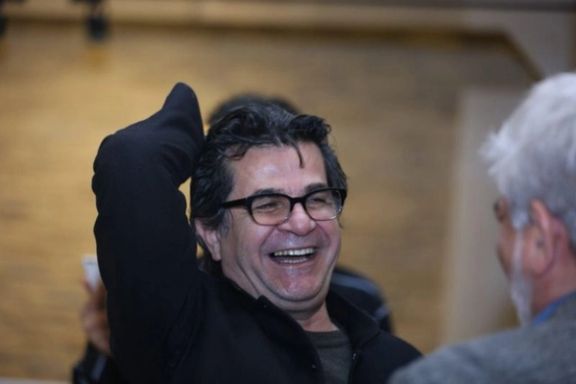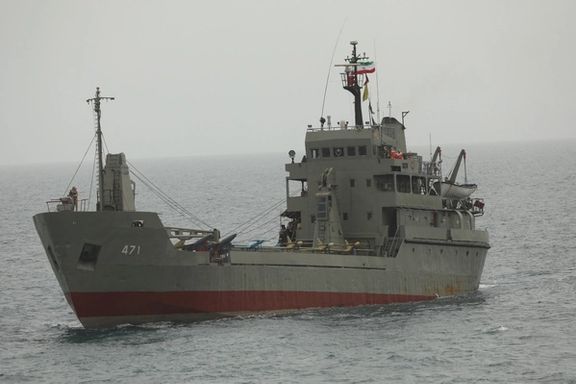UN Welcomes Life Sentence For Iranian Jailor In Sweden

The United Nations has welcomed the life sentence by a Swedish Court for Hamid Nouri over executions of political prisoners in 1988.

The United Nations has welcomed the life sentence by a Swedish Court for Hamid Nouri over executions of political prisoners in 1988.
UN High Commissioner for Human Rights Michelle Bachelet tweeted on Friday to hail the historic conviction of a former Iranian official for his role in the 1988 summary executions of political prisners.
She also called on other countries to “use universal jurisdiction to bridge the accountability gap for serious crimes and ensure truth and justice.”
The Special Rapporteur on the situation of human rights in Iran, Javaid Rehman, also praised the decision for the Iranian prosecutor and prison official, saying, “The process and verdict in Sweden constitute a landmark and important leap forward in the pursuit of truth and justice for a dark chapter in Iranian history. It is also a clear signal that denial, despite substantive evidence, and impunity can no longer be tolerated.”
“I urge other States to take on similar investigation and prosecution of serious human rights violations in Iran using principles of universal jurisdiction,” he added, reiterating calls for accountability for the summary executions and enforced disappearances in 1988. “However, the events continue to be denied by Iranian authorities. I hope this verdict is a first step towards full truth, justice and compensation for victims, their families and civil society organizations that persist in their demands for justice”.
Amnesty International had also lauded the decision earlier, saying the sentence “sends an unequivocal, and long overdue, message to the Iranian authorities that those responsible for crimes against humanity in Iran will not escape justice.

Friday Prayers Imams and loyalist politicians, even some "reformists" echoed the party line in support of the government's campaign promoting compulsory hijab.
The support for the government’s ever-tightening hijab rules came after a July-12 campaign by women’s rights advocates for a day without headscarves, dubbed “NO2Hijab”.
Ahmad Khatami who often leads the prayers in Tehran said on Thursday in Qeshm Island in southern Iran that many criticize Iran's hardliners for ignoring astronomical salaries and hefty embezzlements of state officials and minimizing Islamic values to covering women's hair.
He said "a sin is a sin whether it is showing a flock of a woman's hair or stealing public funds. Both not wearing the hijab and stealing from the public are sins." Khatami further charged that those who do not respect compulsory hijab are not devoted Muslims. While making the statement, he probably did not realize that in most Muslim countries governments do not impose hijab on women.
He claimed that "hijab is a social problem all over the world. It is not an individual responsibility so that some people could skip fulfilling." Khatami added that not observing the compulsory hijab rule leads to the decline of family values and creates social insecurity.

Criticizing those who say there is no official law against compulsory hijab in Iran, Khatami, a member of the Assembly of Experts, said that the Supreme Council of Cultural Revolution passed 300 articles of regulations in 2007. He said "Not covering women's hair is an idea propagated by the enemies of the revolution and the Islamic regime.
On Friday, imams in tens of Iranian cities including Mashhad, Gorgan, Hamadan and Esfahan promoted the party line about compulsory hijab and criticized the campaign against compulsory hijab as an action advised by Westerners. In Gorgan, Kazem Nourmofidi, the city's Friday prayers imam and Supreme Leader Ali Khamenei's representative to Golestan Province said in a comment with an implicit threat about cutting payments to women with bad hijab that women who work for the government and are paid by the government should observe the compulsory hijab rules more rigorously.
Meanwhile, in a bot-assisted campaign on social media, Iran's hardliners "amplified" and "trended" the Persian hashtags "Chaste Iran" with more than 56,000 tweets and "Gem of Chastity" with over 15,700 tweets. This comes while many Iranians on social media supported last week's campaign against compulsory hijab. Some of them on Friday morning harshly criticized former parliamentary speaker Mehdi Karroubi who spoke in support of compulsory hijab in a rare public appearance from his home where he has been under house arrest for 11 years for opposing the rigged presidential election in 2009.

Another reformist figure who came out in support of compulsory hijab, at the same time criticized the government's chastity squads for lining up "bad-hijab" women and taking their photograph like criminals. Former vice president for women affairs Massoumeh Ebtekar also claimed that Khamenei is against using violence against women and further opined that the Iranian Constitutional Law is silent about the issue of hijab.
In a move probably to cover herself for her minimal criticism of the government, Ms. Ebtekar, one of the 1979 hostage takers at the US Embassy in Tehran, said the policy to punish women for not wearing the compulsory hijab is a legacy of former ultraconservative President Mahmoud Ahmadinejad's administration.

A delegation of Russian officials visited an airfield in central Iran at least twice in the last month to examine military drones it is looking to acquire for its ongoing war in Ukraine.
The White House released a report on Saturday as President Joe Biden was about to hold a meeting with the leaders of six Persian Gulf countries, plus Egypt, Jordan and Iraq in a regional summit.
Iran began showcasing the Shahed-191 and Shahed-129 drones – both capable of carrying precision-guided missiles -- to Russia at Kashan Airfield south of Tehran in June.
US National Security Adviser Jake Sullivan disclosed satellite photos of drones in flight during the Russians' visit as Iran was showcasing its weapons-capable UAVs. “This suggests ongoing Russian interest in acquiring Iranian attack-capable UAVs," he said.
On July 11, Sullivan revealed that Iran is preparing to train Russian personnel to use its drones perhaps as early as this month, adding, “Our information indicates that the Iranian government is preparing to provide Russia with up to several hundred UAVs, including weapons-capable UAVs on an expedited timeline.”
Yevheniia Kravchuk, an official of Ukrainian President Volodymyr Zelenskyy’s political party, told Iran International on July 12 that the news has shocked Ukrainian officials, noting that Tehran’s decision would lead to the death of more Ukrainian civilians.
Fars News highlighted Friday a phone conversation between Iranian Foreign Minister Hossein Amir-Abdollahian and his Ukrainian counterpart Dymytro Kuleba, in which the Iranian dismissed claims that Tehran was preparing to send drones to Moscow to help its military effort.

France has called on the Islamic Republic to release three film makers arrested earlier in the month in the latest criticism of Iran's record over human rights by major Western powers.
On Friday, the French foreign ministry specifically named the three Iranian award-winning filmmakers who were arrested on July 8 and 11 – namely Jafar Panahi, Mohammad Rasoulof and Mostafa Aleahmad.
Earlier in the week, the Cannes Film Festival, the Berlinale, the European Film Academy and the International Coalition for Filmmakers at Risk also called for the immediate release of the prominent filmmakers.
Panahi, who has won numerous awards, including the Golden Leopard at Locarno Festival, the Golden Lion in Venice, and the Silver Bear at the Berlinale, was arrested July 11 as he was protesting the detention of two other award-winning filmmakers Mohammad Rasoulof and Mostafa Alehahmad.
Rasoulof – another prominent filmmaker with several international awards such as the Golden Bear – and Alehahmad – who is known in international film galas for his short works -- were arrested July 8 as part of the Iranian crackdown on the signatories of a collective statement titled “Lay down the gun” issued by more than 100 film industry personalities in the end of May.
The statement called on military and security forces who “have become tools for cracking down on the people,” not to suppress protesters during a wave of protests across Iran that were triggered when a 10-story building collapsed in Abadan, leaving at least 40 people dead and dozens missing.

Fars News highlighted Friday a phone conversation between Iranian Foreign Minister Hossein Amir-Abdollahian and his Ukrainian counterpart Dymytro Kuleba.
In a long piece, the agency used the term “attack” for Russia’s intervention in Ukraine, rather than referring to a “crisis” as state-owned media has generally done. Fars also stressed Amir-Abdollahian had dismissed Monday’s claim from United States National Security Adviser Jake Sullivan that Tehran was preparing to send drones, some armed, to Moscow to help its military effort.
UPDATE - Later, the White House released satellite photos and information that Russian military officials visited an Iranian drone base in Kerman to review military UAVs.
This was the fourth phone conversation between the two men, Fars explained, during the crisis, the first before hostilities began in February and three since then.
The agency suggested Amir-Abdollahian had played a mediating role conveying messages between the two sides, including during his trip to Moscow in mid-March and at the meeting of Afghanistan’s neighbors in China, which was March 30-31.
In Friday’s call, Fars reported, Amir-Abdollahian expressed “opposition to Russia’s attack on Ukraine” and reiterated that Iran had “tried to stop this war” and facilitate diplomacy between the two sides. This was in line, the foreign minister had explained, with Iran’s opposition to wars in Afghanistan, Yemen and Palestine.
The foreign minister pointed out that Sullivan’s claims about drones had coincided with “Biden’s trip to occupied Palestine” and said they had been made “simply for political ends.” Fars noted that Iran’s foreign ministry had already stated that while Tehran had “different areas of cooperation with Russia, including defense,” it would take military side and had also made clear its belief that the war in Ukraine should end with a ceasefire.
‘Nato tools,’ grain supplies
Fars also noted the interests of arms producers in “some western countries, trying to sell products,” and reminded readers that at his joint press conference in Tehran June 22-3 with Russian foreign minister Sergei Lavrov Amir-Abdollahian had condemned the US “using Nato tools” as one of the roots of the conflict, a reference to the alliance’s expansion in eastern Europe since 1999.
While Iran has far more imports from Russia than from Ukraine, like many other countries it is feeling the inflationary pinch of disruption in supplies. Iranian Oil Minister Javad Owji told the semi-official Iranian news agency the Young Journalists Club in May that Iran expected to import 5 million tonnes of grain, including some wheat, from Russia in the Iranian year ending March 2023. Tehran’s domestic wheat production is being hampered by low rainfall.
It was also noteworthy that Fars made no mention of the disputween the two countries over the Ukrainian airliner shot down in 2020 over Tehran by two missiles fired by the IRGC. Ukrain had been pursuing the case for a full accounting by Tehran and compensation before the Russian invasion.
An early end to the Ukraine war would not only ease pressure on the Iranian economy but placate those Iranians who have taken up the Ukrainian case, with some gathering outside the Russian embassy in Tehran back in February to chant “death to Putin.” The conservative Jomhouri Eslami newspaper has been firm in backing Ukraine’s cause and condemning Moscow.

The Iran Navy announced Friday the launch of its first drone division in the Indian Ocean during US President Joe Biden's Middle East tour.
The first UAV carrier flotilla of Iran’s Army, comprised of surface and subsurface units equipped with various types of combat, reconnaissance and kamikaze drones, was unveiled by the southern fleet of the Navy in a ceremony attended by Commander-in-Chief of the Islamic Republic of Iran Army Major general Abdolrahim Mousavi and Commander of the Iranian Navy Commodore Shahram Irani.
According to state media, the drones that were displayed on Friday included the Pelican, Arash, Homa, Chamrosh, Jubin, Ababil-4 and Bavar-5, but it was not clear how many vessels or drones were included in each unit, only that one ship carried 50 drones.
Mousavi said the reconnaissance drones have increased the intelligence sway of Iran’s vessels to hundreds of kilometers beyond the borders of the country, adding that the Navy’s suicide and combat drones have leveled up Iran’s deterrence power.
US National Security Adviser Jake Sullivan Monday said that Russia wants to obtain hundreds of drones from Iran, both for surveillance and attack, to use in its war in Ukraine, adding that Iran is “preparing to train Russian forces to use these UAVs with initial training sessions slated to begin as soon as early July.”
Iran is known to have supplied UAVs to its proxies in several countries across the Middle East.
“The Americans and Zionists (Israel) know very well the price of using the word 'force' against Iran,” Brigadier General Abolfazl Shekarchi, spokesman for the Iranian armed forces, was quoted as saying by Iranian media on Friday.